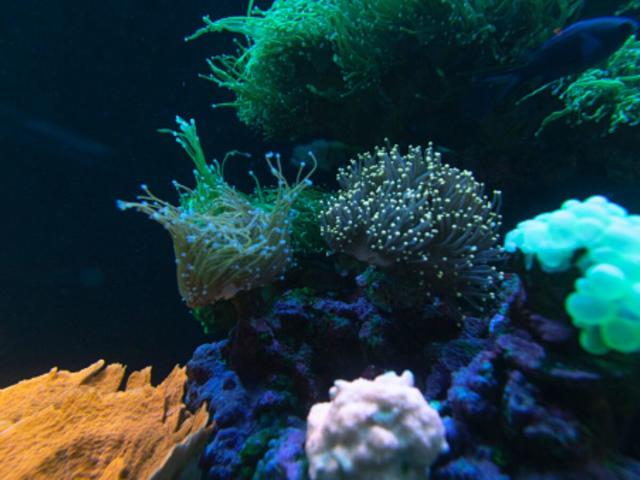Researchers at the Max Planck Institute for Marine Microbiology have revealed a unique symbiosis between a bacteria and a marine algae, explaining how maritime plants feed without cyanobacteria.
In the deep ocean, plant species need nitrogen to feed and grow. However, these plants cannot assimilate it in gaseous form, so to access it, they depend on the help of microorganisms. In fact, these microorganisms are nitrogen-fixing bacteria, such as cyanobacteria. They have the ability to convert unusable nitrogen into forms absorbable by plants. This process is called nitrogen fixation. Once the nitrogen is converted, it is released into the water in an assimilable form, and marine plants can absorb it directly through their external surfaces, such as exposed leaves or roots. However, in certain oceanic regions, these fixing bacteria are not present, so how do these plants feed? This is the whole mystery that biologists from the Max Planck Institute have elucidated in their publication published on May 9, 2024 in the scientific journal Nature.
An unprecedented symbiosis between an algae and a bacteria
Since 2020, the Max Planck Institute team has sailed thousands of kilometers from the coast of Germany to the tropical waters of the North Atlantic and this expedition was not in vain. By collecting around a hundred liters of sea water, the researchers highlighted a symbiosis between a diamota (a microscopic algae belonging to the composition of plankton) and a nitrogen-fixing bacteria “related to the genus Vibrio, but of Unexpectedly, the organism itself was closely linked to Rhizobia (bacteria) which live in symbiosis with legumes,” says Tschitshko, first author of the study. Indeed, this Rhizobia is present on Earth and is in symbiosis with the roots of leguminous plants such as beans or peas.
Nitrogen-fixing rhizobial symbionts (fluorescently marked in orange and green using genetic probes) residing inside diatoms collected from the tropical North Atlantic. The core of the diatom is shown in bright blue. Max Planck Institute for Marine Microbiology Bremen/Mertcan Esti
“The bacteria fixes 100 times more nitrogen than it needs for itself”
In the ocean without cyanobacteria, this symbiosis takes place thanks to the genus of bacteria Vibrio, nicknamed by biologists “Candidatus Tecttiglobus diatomicola” and algae. To observe this phenomenon, the researchers used fluorescent markings on these bacteria taken from the water. These analyzes demonstrated that these nitrogen fixers were hidden inside the algae. “We found groups of four Rhizobia, always sitting in the same place inside the diatoms,” says co-author Kuypers in a press release. How does it work ? This bacterium receives carbon from the algae in exchange for a form of nitrogen that can be assimilated by it. “To support the growth of the diatom, the bacteria fixes 100 times more nitrogen than it needs for itself,” explains Wiebke Mohr, co-author of the study.
A group of diatoms with their fluorescently marked symbionts Max Planck Institute for Marine Microbiology Bremen/Mertcan Esti
A better understanding of the maritime environment
For the authors of this report, the discovery of this symbiosis could also have profound implications for our understanding of the evolution of marine organisms and their survival strategies in nutrient-poor environments. The researchers suggest that this interaction between the diatom and the bacteria could represent a preliminary step to a complete merger between the two organisms, much like what happened billions of years ago when small entities merged to form our present cells, with mitochondria and chloroplasts.




